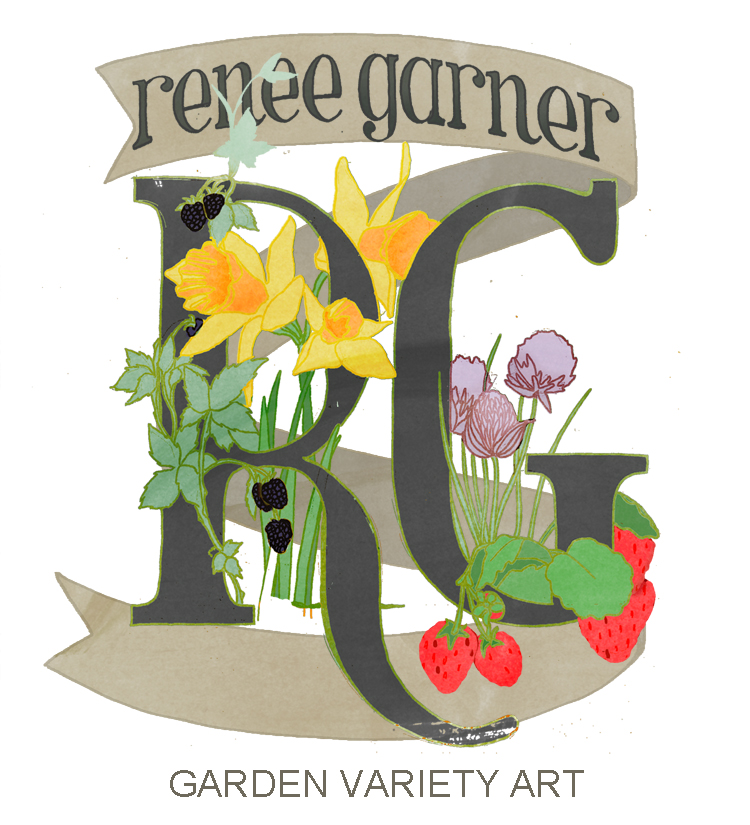How many of you subscribe to
Anthology? I had a subscription, didn't realize it lapsed, and recently renewed. My first issue back was the winter "Americana" issue, which I received last week sometime. I sat down with it, turned on My Little Pony so I could read it cover to cover, uninterrupted, ripped open the plastic sleeve, deeply inhaled the beautiful smell of fresh ink on paper, and started reading.
This issue, described by the editor as a "cross section of Americana", felt odd and alienating. I do a lot of over-thinking, so it wasn't surprising when I sat down to read it again, trying to pinpoint the lingering uneasiness**. Then it hit me: our quirky yard (and the experience of having it judged), the cracks in our house, the problems with living in an old structure; it's not all sunshine and perfect imperfection.
Peeling paint in an older home, to a home appraiser, means lead tests must follow. Cracks in original plaster mean the foundation must be checked. Peeling aged wallpaper and rusty old pipes means the resale value of the home goes down. How do I know? We've been trying to buy the house we're in, built in 1943, and it's not so easy for a first time home owner currently living in the structure .
From what I understand, banks these days aren't really on the side of first time home buyers unless they have a sizable down payment or are purchasing a new-ish home. They want the security of knowing upfront that if we stop paying they'll be able to get their money back. That makes sense.
But it also means a fixer-upper, an estate with the patina and visual interest of age, and drafty, energy inefficient windows are no longer affordable, available, and attainable, but the eye candy of the rich. Yes, that bothers me. Not because poor people should live in bad conditions, but because we're romanticizing what could otherwise be difficult living; hardening ourselves against housing inadequacies.
According to Bloomberg BusinessWeek and the Census Bureau, in 2011"the official poverty rate essentially held at 15 percent, meaning that 46.2 million people live below the poverty line."
Which leads us back to the content of the magazine: homes of executives filled with peeling paint, textures from residents' past, old, seemingly rickety windows, starkly contrasting shelves packed with valuable antiques and art bought on trips around the world. Look how simple we are! Look at the imperfection we embrace! We are charming and we are real! There's a common aesthetic throughout, which makes the magazine feel beautifully cohesive, implausibly homogeneous, and entirely dishonest.
While income figures were not part of the content, with 2
Anthropologie executives featured in a single issue. I know I pick on Anthro a lot, but as
Forbes describes the Anthro market, I'm clearly not part of their market,
"Anthropologie’s ideal demographic is affluent, settled-down career women
in their 30s and 40s, with an average family income of $200,000 a year.
The brand sells its products at premium prices points, for example,
$250 sundresses, $400 shoes, $700 end tables."
As executives for a retail store aimed above my means, I'm pretty sure that translates to an income far greater than my own. One of the executives is featured because he owns a hobby train store in Ohio, while living in Pennsylvania. The other has made a quaint home near Philly filled with just peeling paint and old-house-character galore. Other homes include a vacation home for a Bay Area couple, and that of designer
John Derian.
This annotated version "Americana" lightly brushes over disrepair and glorifies it as the "substance and style" of America today without recognizing 15% of America. Couldn't it be at least as interesting to see the apartment of a local barista who slings coffee daily to support her art-making? How about a college kid, neck deep in student loan who has styled his space to suit his tastes, despite the authentic and gritty decay of off-campus slum housing?
Is Americana a bland cross-section of a by-gone, nostalgic America? By the end of the issue, the second time around even, I realized exactly why I felt alienated: we're not rich enough to have peeling wallpaper in our home.
** Before I get into things further, 2 of the articles seemed authentic
and honest: the couple who buy pieces they love as they go, relied on a
friend for a beautiful kitchen cabinet and sleep in a sparsely decorated
room that is clearly loved; the man who lives in a rented cabin with
little room for customization plainly explains his home is more about
being close to nature than it is the "luxuries" of an interior.








